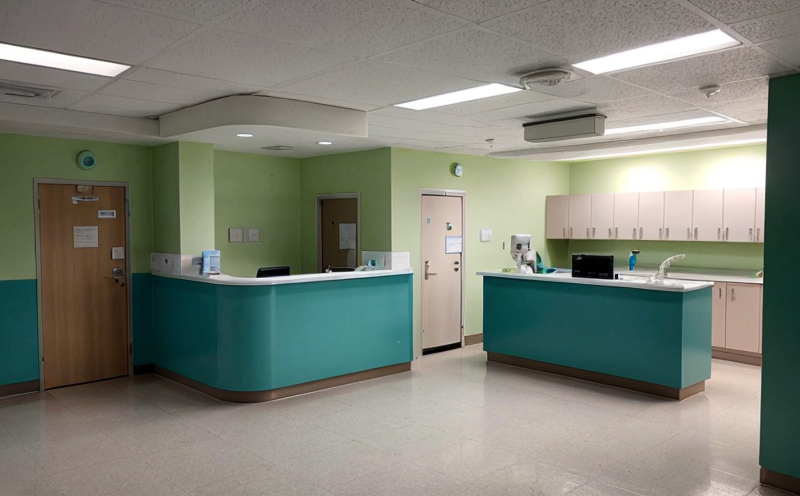ASTM E3206 Contaminant Detection in Healthcare Products
The ASTM E3206 standard provides a comprehensive approach to detecting contaminants that may pose risks during the manufacturing and use of healthcare products. This service is crucial for ensuring product safety, compliance with regulatory requirements, and protecting public health.
Contamination can originate from various sources including raw materials, production processes, packaging, and handling. Contaminants such as microorganisms, metals, chemicals, or particulates can have severe consequences if not detected early in the manufacturing cycle. The ASTM E3206 method aims to identify these contaminants through a series of tests designed to assess product integrity and safety.
The standard specifies detailed procedures for sampling, sample preparation, analytical methods, and reporting results. It emphasizes the importance of selecting appropriate test methods based on the nature of the healthcare products being evaluated. This ensures accurate detection and quantification of potential hazards.
For instance, when testing medical devices or pharmaceuticals, it is essential to consider factors such as surface area, material composition, and intended use. The ASTM E3206 protocol allows for customized sampling strategies tailored to these specific conditions. By following this standardized procedure, laboratories can ensure consistent and reliable results across different product types.
The methodology outlined in ASTM E3206 covers several key aspects of contaminant detection:
- Sampling protocols
- Suitable analytical techniques for various contaminants
- Criteria for accepting or rejecting test samples
- Interpretation and reporting of findings
The primary goal is to provide healthcare manufacturers with robust data that supports informed decision-making regarding product quality assurance. This information can be used not only during the development phase but also throughout production and post-market surveillance.
In summary, ASTM E3206 serves as an indispensable tool for ensuring the safety of healthcare products by identifying and mitigating risks associated with contaminants. Its application helps maintain high standards of quality control while fostering trust among consumers who rely on these critical medical tools.
Why It Matters
The detection of contaminants in healthcare products is vital for several reasons. First and foremost, it protects patients from exposure to potentially harmful substances that could compromise their health or even lead to serious adverse effects. By adhering to rigorous testing procedures like those specified in ASTM E3206, manufacturers can ensure that every product they produce meets stringent safety standards.
Secondly, compliance with such standards demonstrates a commitment to ethical business practices and responsible stewardship of public welfare. Consumers are increasingly aware of the importance of knowing what goes into their medications or devices, making transparency about testing processes more crucial than ever before.
Moreover, failure to detect contaminants can result in recalls that not only damage brand reputation but also incur significant costs for companies involved. Therefore, investing time and resources into effective contaminant detection early on saves money in the long run by preventing costly issues later down the line.
Finally, regulatory bodies worldwide rely heavily on accurate data provided through reliable testing methods when assessing compliance with relevant regulations. Meeting these standards enhances an organization’s credibility and enables smoother interactions between stakeholders involved in healthcare product development and distribution.
Benefits
Implementing ASTM E3206 for contaminant detection offers numerous advantages to organizations within the hospital and healthcare sectors:
- Risk Mitigation: Early identification of contaminants reduces the likelihood of introducing hazardous materials into patient care.
- Compliance Assurance: Ensures adherence to international standards, thereby facilitating smoother regulatory processes.
- Informed Decision-Making: Provides valuable insights that inform product development and improve overall quality control practices.
- Patient Safety: Directly contributes to enhancing patient safety by eliminating potential sources of harm from medical devices or pharmaceuticals.
Beyond immediate benefits, consistent application of ASTM E3206 fosters a culture of continuous improvement within an organization. It encourages ongoing evaluation and refinement of testing protocols based on emerging trends in healthcare technology and scientific advancements.
By leveraging this standardized approach, companies can build stronger relationships with regulatory authorities while maintaining trust among end-users who depend upon the efficacy and safety of their products.
Why Choose This Test
- Comprehensive Coverage: ASTM E3206 addresses a wide range of contaminants, ensuring no stone is left unturned in terms of potential hazards.
- Standardized Procedure: Offers clear guidelines that simplify the testing process and minimize variability between laboratories.
- Regulatory Acceptance: Widely recognized by regulatory bodies around the world, providing peace of mind regarding compliance.
- Scientific Rigor: Backed by robust scientific principles and methodologies, ensuring accurate and reliable results.
The combination of these factors makes ASTM E3206 an ideal choice for healthcare organizations looking to enhance their quality assurance programs. It provides a solid foundation upon which further improvements can be built, ultimately leading to safer products and better patient outcomes.





